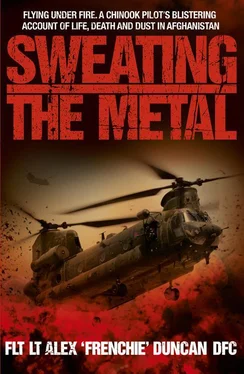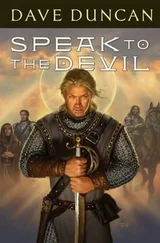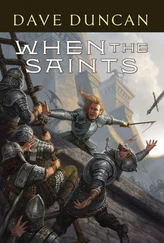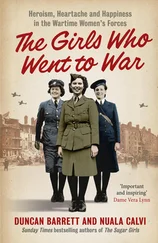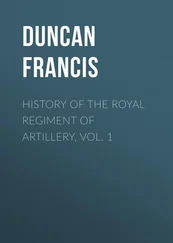‘We got the shout at around 15:20 and while I confirmed the limited details that were available, Doug Gardner, who was my co-pilot, went with our crewmen – Paul Day and Tony Sutherland – to spin the aircraft up. We were ready to lift within minutes. As well as the MERT and force protection team on board, I also had a camera crew from the Discovery Channel filming for a series called Frontline Battle Machines . Information was sketchy, but we knew there were six US and ANA casualties – three T1s and three T2s, all with gunshot wounds – at a grid near Lashkar Gah. They’d been involved in a fierce and protracted firefight which was still going on.
‘En route, our Apache escort, Ugly Five Zero, called us and said the LS was too hot, so we held off. To make matters worse, the JTAC – who would normally coordinate the extraction – was one of the critically wounded.
‘I flew a holding pattern at height about ten miles out from the emergency LS. We could see events unfolding on the ground and soon another Apache joined our escort – both then engaged the Taliban, laying down heavy suppressing fire to assist the ground units. Doug worked out we had enough fuel for about forty-five minutes total holding. After about twenty minutes of flying random patterns to avoid predictability, I dropped down to low level to deceive any dickers into thinking we were beginning our run into the LS.
‘The ground troops were desperately trying to secure the LS but, even with the two Apaches providing air support, they were struggling. Every time they stepped out of cover, the Taliban targeted them with heavy and effective SAFIRE; we were cleared into the LS at least three times before being told to: “Hold, Hold, Hold!”
‘Having already taken casualties, including one KIA, the ground troops were in a very difficult situation. It was obvious that we’d be cleared in at the first sign of any lull in the fighting, but the LS was never going to be fully secure. By this time, we were well aware of how long we’d been holding and we were desperate to get those boys out.
‘Eventually, the Apache called us over the radio. “Tricky Seven Three, Ugly Five Zero, enemy are north and north-east of the LS. Route in from the west; the LS will be marked with smoke.”
‘Around forty minutes after arriving on station, we received positive clearance into the LS with a reminder of the enemy forces’ firing points and ingress route. As a result of the radio chat and gauging the general feel of the situation I said, “I think we’ll put our visors down on this one chaps,” which isn’t always practical in the desert, as they can become scratched and dusty, making it harder to retain good references.
‘I began the descent from the east at 155kts and explained my intentions to the crew so that everyone would have situational awareness of the Taliban’s firing points on the approach. The plan was to route south of the LS and come right until we were going in from the west. Then, as I began the final approach, I’d kick the tail right to bring the starboard M134, which Tony was manning, to bear on the enemy firing points in the 3–5 o’clock position. I saw the white smoke and, with half a mile to run, I began turning the tail through 180° and reversed towards the compounds where the troops had been taking cover. I landed on the smoke with the starboard M134 providing covering arcs.
‘Almost as soon as I landed, I saw puffs of dirt as rounds hit the ground in our 1 o’clock, with muzzle flashes in our 4 o’clock. The ground troops were laying down a barrage of covering fire as the stretcher teams worked with the casualties at the rear. Then I noticed dirt being kicked up as rounds tore into the ground in front of the cockpit. The second that ground forces broke cover with the casualties, the Taliban opened up on them. The weight of fire was incredible – the guys in the back could hear the sound of the guns and rounds ricocheting nearby, even over the sound of the blades.
‘The rate of fire from the ground troops increased rapidly and I twice saw a line of large impact clouds 100m away in our 3 o’clock, moving parallel with the aircraft axis. I reckoned it was from the Apaches’ 30mm cannon. By now, the wounded were coming on board, but even as they were assisted up the ramp, the Taliban had a bead on us and the cab started taking effective fire. I felt a few thuds as rounds impacted the airframe and asked Doug to check the Ts and Ps. Then I heard and felt a round come in somewhere just below me. A few seconds later, I was informed the ramp was up and I got the all clear from Paul. At this stage, the amount of covering fire from the ground forces doubled, but it seemed to me that the rate of enemy fire also increased.
‘I pulled full power and stuck the nose down to get the fuck out but, as I transitioned to height, I felt more rounds strike the aircraft. About twenty seconds after lifting, I heard a succession of loud bangs and then my head was forced violently back. When I opened my eyes, there were several large cracks in my visor, which had blood spattered all over it. Then I saw the bullet hole and the spiderweb cracks surrounding it at the base of my windscreen. I smelled burning and cordite, and then my blood ran cold as I realised I’d been shot in the head.
‘The bullet came through the windscreen in front of me and struck my visor before gouging a chunk off the front of the NVG rail. That deflected it under the outer skin of my helmet and out the top, where it smashed through the top windscreen into the sky. Talk about lucky – if the round had been fired a fraction of a second earlier, if the gunman had aimed 1mm lower, if the NVG rail hadn’t deflected it, its trajectory would have sent it straight through my face and out the back of my head. Now that really got my attention!
‘I looked at Doug to make sure he was okay – he was fine and, at that stage, unaware I’d been hit. I could feel blood running down my face and neck and soaking my body armour. I couldn’t quite put it all together; I knew I’d been hit in the head, but it didn’t make sense – I felt fine. I had good references and, after a cursory glance down myself, I was happy to continue flying.
‘“Chaps, I’ve just been shot in the face but I think I’m okay,” I said. “I took a round through the front windscreen which came up and hit me on the head. I’ve got a bit of a crack and a bleed there.”
‘“Fuck. You okay mate?” Doug asked, looking shocked.
‘“Yeah, bit shaken, but otherwise okay, I think.”
He was mindful that if my condition deteriorated he’d have to take control.
‘“Ian, we’ve lost the AFCS and hydraulics, both secured,” said Doug as he scanned the CAP. Then, “Mayday! Mayday! Mayday! Tricky Seven Three, nine miles to the south. We’ve taken rounds through the cockpit; we’ve also got some transmission problems. Mayday! Tricky Seven Three, contact, nine miles to the south.”
‘“Thanks Doug, can you keep an extra close eye on the transmission Ts and Ps? I’m going to try and maintain our speed and I think, because of the casualties, I’m going to push towards Bastion. If necessary, we’ll land in clear desert, but only if we absolutely have to.”
‘The aircraft was shaking and handling like a pig without the stabilisation system, but I managed to keep her on track.
‘Doug was following me through on the controls in case my injuries were worse than I first thought – at this stage, I didn’t know how bad they were. I was covered in blood, but then even the tiniest head wound tends to bleed like a stuck pig. The left side of my face ached like a bitch, but I was still conscious and clear headed. The medics came into the gangway several times to examine me, but due to the fragile state of the cab and the fact I felt fine, I declined assistance. By now, we were clear of the Green Zone and just minutes out from Bastion, so I told them I’d accept treatment on the ground once we’d delivered the casualties.
Читать дальше
